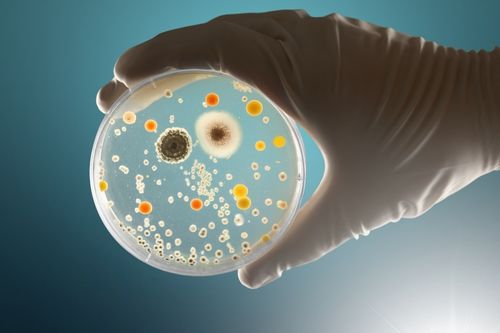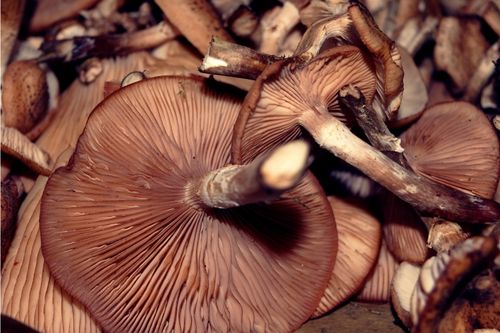Table of Contents
The science stream is a broad field of study that includes all aspects of the physical and natural world, from biology and life sciences to engineering and technology. These aspects range from the intricate details of the universe to perplexing problems in human life. We understand the world around us because of the various branches of Science. Fungi is one such topic from science that is interesting. Read on know about the study of fungi.
What is the study of fungi known as?

Mycology is the study of fungi and their distinct interactions with other organisms and the environment. It discusses the genetic and biochemical properties of fungi, as well as their importance in human life.
Until recent advances in DNA technology, many assumed that fungi were an offshoot of the plant kingdom. According to DNA and biochemical analysis, fungi are a distinct lineage of eukaryotes distinguished by their unique cell wall made of chitin and glucans, which frequently surround multinucleated cells. Mycology is a necessary branch of biology because fungi differ significantly from plants and animals.
Definition for Mycology
Mycology is primarily the study of fungi. Mycologists concentrate on this group of organisms’ taxonomy, genetics, application, and many other characteristics.
There has been the identification of over 50,000 fungi species in various environments worldwide. While some are free-living and have no effect on humans (or other animals), others are either beneficial or harmful, necessitating research and understanding.
History of Mycology
Until the 1800s, fungi were to be just another type of plant. Since ancient times, people have consumed mushrooms (reproductive bodies of fungi) and used them for medication or hallucinogenic effects. Many classical Greek philosophers and naturalists thought about fungi but assumed they were more closely related to plants.
After the invention of the microscope in the mid-1800s, scientists began investigating fungi’s inner workings. Microscopes revealed that fungi had distinct characteristics that distinguished them from plant and animal cells. M.J. Berkeley coined the term mycology in a paper in 1836, when fungi started to get recognition as their distinct kingdom.
However, it was not until modern biochemistry and DNA analysis that one fully appreciated the diversity of fungi.
Unlike most plants and animals, Fungi have multiple nuclei and delicate pores that allow cytoplasm and nucleus to flow between different chambers within the fungal organism freely. DNA analysis revealed that they are more closely related to animals than plants. Scientists studied fungal lifecycles more closely and discovered that most fungi spend their time as mold or ooze.
Characteristics of fungi

Some of the general characteristics of fungi include
- Eukaryotic
- They do not prepare their food- lack chlorophyll
- A cell wall exists
- Heterotrophs
- Use both sexual and asexual reproduction methods (depending on the species)
Classification
Fungi classified as ‘true fungi’ have several species within the fungi kingdom. These include-
Based on the mode of reproduction
Here is the classification based on sexual and asexual reproduction-
Blastocladiomycota
Members of this phylum are either plant and animal parasites or saprotrophs. They live in both aquatic and terrestrial environments and produce meiotic spores.
Neocallimastigomycota
The majority of the fungi in this group are anaerobic. You can find them in the digestive tracts of large herbivores, and zoospores move using flagella.
Glomeromycota
Members of this phylum have symbiotic relationships with various plants and trees. As a result, they are not necessarily parasites that rely entirely on the host. The vast majority of these species use asexual reproduction.
Zygomycota
A small group of saprobe organisms makes up the Zygomycota. As a result, they rely heavily on decaying organic material for energy.
However, a few species are parasitic. Zygomycetes reproduce asexually and create zygospores. Although species such as R. stolonifer obtain their energy from decaying matter (for example, bread), they cause food spoilage and disease transmission.
Basidiomycota
Also known as club fungi, this phylum consists primarily of mushrooms, smut fungi, and rust. The majority of basidiomycetes are grain pathogens that reproduce sexually. Basidiospores are the spores of basidiomycetes.
Ascomycota
Members of Ascomycota, also known as sac fungi, include mushrooms, yeast, truffles, and morels. Most of them are filamentous and are either saprophytes or parasites. They can, however, form symbiotic relationships with other organisms. They procreate both sexually and asexually.
Chytridiomycota
Members of this group are also referred to as chytrids and produce zoospores. These organisms move using a flagellum and reproduce asexually in aquatic environments.
In addition to classification based on the mode of reproduction, fungi are classified based on the following factors-
Morphology
Fungi are classified as molds or yeasts based on their morphology.
Fungi (Filamentous/Hyphal) Mold
Molds are a type of fungus that is filamentous. As a result, they produce hyphal threads, which combine to form a mass known as mycelium (vegetative, aerial, or fertile). The hyphae may be branched or have septums depending on the species.
Here are some common molds
- Rhizopus
- Mucor
- Aspergillus
- Acremonium
Molds use these filamentous structures for various purposes, including reproduction and nutrient absorption.
Yeasts
Unlike molds, yeast is unicellular and can range from spherical to ellipsoid. Yeast is further classified as follows-
True yeast
They are cells that reproduce by budding (e.g., s. cerevisiae).
Yeast-like fungi
They produce false hyphae, also known as pseudohyphae (e.g., c. neoformans).
Dimorphic fungi
Dimorphic fungi can exist depending on their environment (mold or yeast). For example, p. Marneffei.
Career
Graduates with a background in Biology can pursue various job opportunities in Mycology, ranging from Food Science to Clinical and Medical Research. Let us look at some of the significant career opportunities in Mycology.
- Associate Research Scientist/Biologist
- General Microbiology TB/Mycology Microbiologist Supervisor
- Senior Microbiologist
- Bacteriologist
- Plant Pathologist
- Clinical Laboratory Scientist
- Clinical Pathologist / Clinical Microbiologist
- Research Zoologist/ Microbiologist, Veterinary Medical Officer
- Public Health Microbiologist
Key takeaways
- M.J. Berkeley coined the term mycology in a paper in 1836.
- You can classify fungi based on their mode of reproduction and morphology.
- Some career prospects for Mycology include Senior Microbiologist, Plant Pathologist, and other great opportunities.
Did you find this blog informative? If so, do express your thoughts in the comments below. Click here to contact us for more information on the study of fungi. We would be happy to assist you with your queries.
Liked this blog? Read next: Study of teeth their types, applications, and much more.
FAQs
Q1. What are the types of mycology?
Answer- One can divide Myology into several branches. It includes forensic mycology, ethnolichenology, and lichenology. These divisions enable mycologists to concentrate on specific aspects of the field.
Q2. Who is the father of fungi?
Answer- Heinrich Anton de Bary (26 January 1831 – 19 January 1888), a German surgeon, botanist, microbiologist, and mycologist, is the father of fungi.
Q3. What is a mushroom collector called?
Answer- A mushroom collector is called a mycophile.







